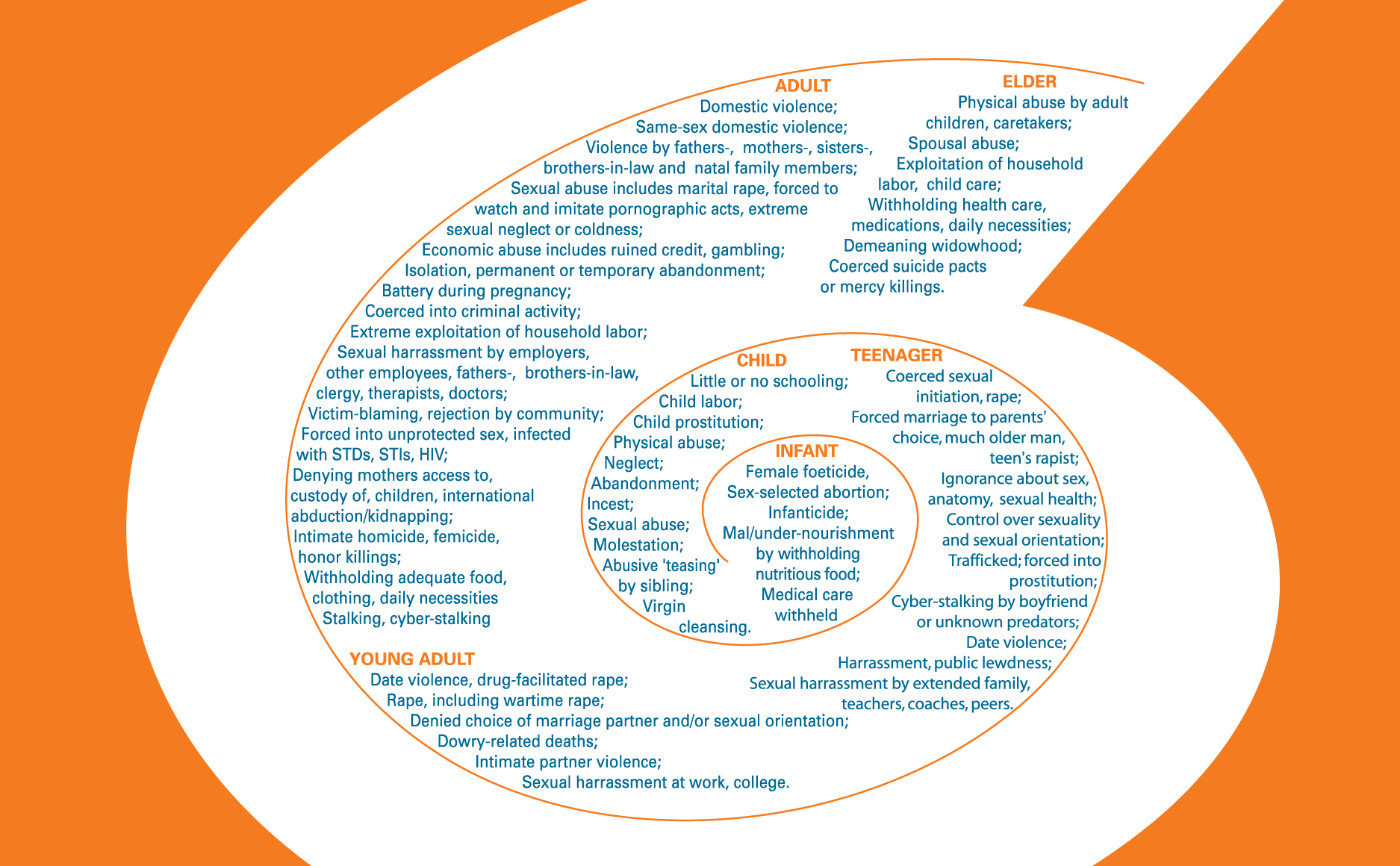Lifetime Spiral of Gender Violence
Additional Versions
Translated Versions
All translated versions have English on reverse side
From the aborting of female fetuses to intimate homicide, girls and women may encounter numerous oppressions during infancy, childhood, adolescence, adulthood, and as elders. Some of these are confined to one stage in the lifecycle, some continue into subsequent stages.
The Lifetime Spiral reveals patterns of victimization by enumerating the types of violence, vulnerabilities, and harms women and girls face. It also implicitly shows the presence of different abusers located over the lifecourse. A grandmother may withhold nutritious food for a baby girl, a brother may perpetrate incest, a priest may molest a teen girl, a father may insist on a forced marriage, a college student may date rape a classmate, a co-worker may engage in sexual harassment, a husband may batter during pregnancy, a brother- or sister-in-law may stalk, a family may silence or shame, a community may ostracize homosexuals, an ex-boyfriend may kill.
In addition to physical, sexual, economic and emotional abuses; violence is about living in a climate of fear, shame, coercive control, and devaluation. It is often experienced in the context of additional oppressions based on race, ethnicity, age, sexual orientation, gender identity, type of labor performed, level of education, class position, disability, and immigration or refugee status. Raising awareness about the historical nature of gender violence confronts victim-blaming, informs advocacy, and empowers survivors.
Related Resources
Lifecourse Experiences of Intimate Partner Violence and Help-Seeking among Filipina, Indian, and Pakistani Women, 2010
IPV often recurs over the lifecourse and survivors’ decisions to seek help are shaped by their history of positive and negative experiences of help-seeking, and because their preferred and actual sources of help change over time. Using the Life History Calendar to interview 143 Filipina, Indian and Pakistani domestic violence survivors, this research enhances our understanding of help-seeking over the lifecourse and makes recommendations for system responses to domestic violence in Asian communities.
